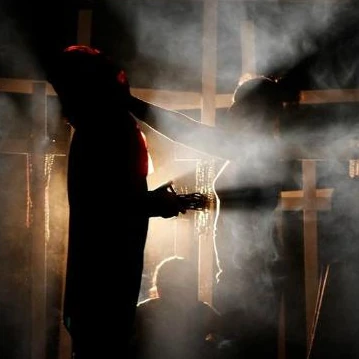Jewish Belonging and Mourning:
Separating Spaces of the Living from Places of the Dead in Myriam Moscona’s Tela de sevoya
(pp. 142-160; DOI: 10.23692/iMex.16.10)
 Loading...
Loading...Dr. Charlotte Gartenberg
 Charlotte Gartenberg received her Ph.D. from Graduate Center, City University of New York (2018) in Latin American and Spanish culture. She has taught courses on writing as well as on a number of Latin American topics such as contemporary translation and haunting as a cultural trope. Her scholarly work focuses on literary theory and Latin American Jewish culture, and she has published on literature and linguistics, including articles on No honrarás a tu padre (Kleinburg 2004), La Bobe (Berman 1990), Novia que te vea (Nissán 1992) and the online dictionary Léxico judío latinoamericano. She is also a translator and has worked with texts by authors Sergio Chejfec, Eliah Germaní and Patricia Erlés. Currently, she is polishing her dissertation, “Haunted Stories, Haunted Selves: Ghosts in Latin American Jewish Literature”, into a monograph and beginning a research project on death, humor and identity.
Charlotte Gartenberg received her Ph.D. from Graduate Center, City University of New York (2018) in Latin American and Spanish culture. She has taught courses on writing as well as on a number of Latin American topics such as contemporary translation and haunting as a cultural trope. Her scholarly work focuses on literary theory and Latin American Jewish culture, and she has published on literature and linguistics, including articles on No honrarás a tu padre (Kleinburg 2004), La Bobe (Berman 1990), Novia que te vea (Nissán 1992) and the online dictionary Léxico judío latinoamericano. She is also a translator and has worked with texts by authors Sergio Chejfec, Eliah Germaní and Patricia Erlés. Currently, she is polishing her dissertation, “Haunted Stories, Haunted Selves: Ghosts in Latin American Jewish Literature”, into a monograph and beginning a research project on death, humor and identity.
When a family member dies, the loss is of a person. But in cases where that person embodies the last living link to an exilic homeland – a not uncommon occurrence for Jews in the Americas – the death of a parent can also mean the loss of a home. Mexican writer and daughter of Sephardic immigrants, Myriam Moscona chronicles the experience of her unmooring grief after the generations before her die in her novel Tela de sevoya (2012). Compounded losses cause Moscona and her house to become haunted, and the journey seeking roots that that her mourning compels her to is as much about a search for spaces of identity as it is about combatting haunting. Moscona goes to the Balkans to record the last native speakers of Ladino and to see the places her parents once called home. While the trip does not give her new spaces of Jewish belonging in the form of these recovered homelands, it does allow her to divide the past from the present, to separate the places of the dead from the spaces of the living. Her process reveals a complex vector where haunting, belonging and Jewishness meet for children of Diaspora living in the Americas and ultimately proposes an alternative territory where an anchoring Jewish identity might inhere
Cuando un pariente se muere, se pierde una persona. Pero, en los casos en que esta persona simbolice el último vinculo vivo – no poco común para judíos en las Américas –, la muerte de un padre también puede significar la pérdida de un hogar. En Tela de sevoya (2012), escritora mexicana e hija de inmigrantes sefardíes, Myriam Moscona traza la experiencia de su pena cuando le deja desorientada después de las muertes de las generaciones previas. Estas pérdidas combinan, ocasionando la apariencia de lo fantasmal en su casa y en su vida, y Moscona emprende un viaje que busca raíces para encontrar espacios de identidad y combatir un duelo que le amenaza. Moscona va a los Balcanes para grabar los últimos hablantes del ladino y para ver los lugares que antes fueron los hogares de sus padres. A pesar de que el viaje no le de nuevos espacios donde se siente cierta pertenencia a patrias recuperadas, le permite distinguir el pasado del presente, facilita la separación de los lugares de los muertos de los espacios de los vivos. Su proceso revela un vector complejo donde lo fantasmal, la pertenencia y la judeidad se juntan para los hijos de la diáspora que viven en las Américas y, últimamente, propone un territorio alternativo para un identidad judía que pueda anclarlos en dónde y cuándo están.
Alberto Ribas-Casasayas - Editorial
Amanda Petersen – Breaking Silences and Revealing Ghosts
Olivia Cosentino – Haunted Bodies
Elizabeth Villalobos – Espectros del feminicidio
Roberto Cruz Arzabal – Necroescrituras fantológicas
David Dalton – Una espectralidad cibernética
Carmen Serrano – Dark Networks and Pathogens
Alma Barbosa Sánchez – La existencia sobrenatural de los difuntos
Milvet Alonso – Convergencia de voces hñähñu
Charlotte Gartenberg – Jewish Belonging and Mourning
Reviews


